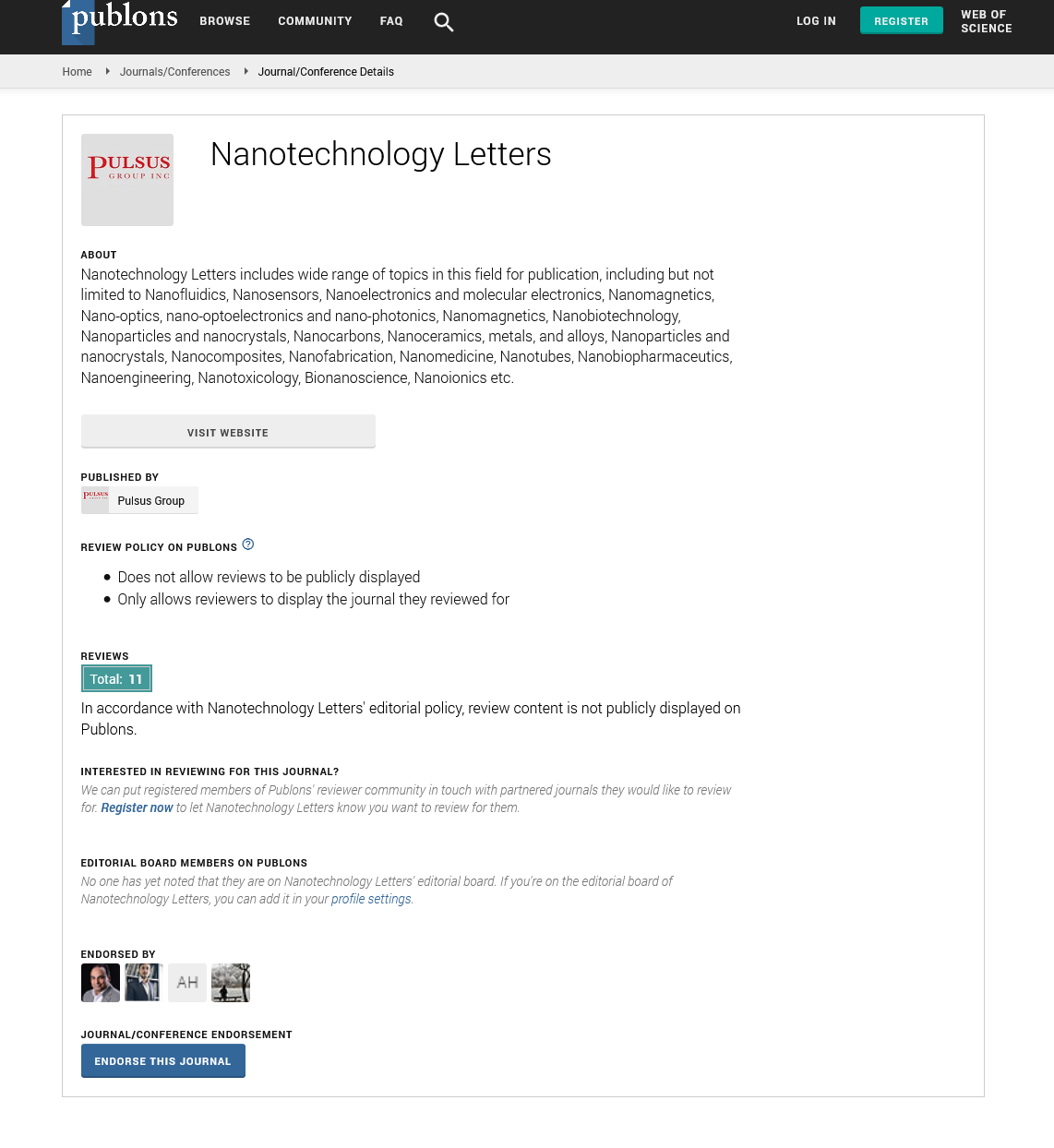The study of nanobiotechnology and nano encapsulation phenomena
Received: 09-Sep-2021 Accepted Date: Sep 23, 2021; Published: 30-Sep-2021
Citation: Zhen WangY. The study of nanobiotechnology and nano encapsulation phenomena. Nanotechnol Lett 2021;6(1): 2.
This open-access article is distributed under the terms of the Creative Commons Attribution Non-Commercial License (CC BY-NC) (http://creativecommons.org/licenses/by-nc/4.0/), which permits reuse, distribution and reproduction of the article, provided that the original work is properly cited and the reuse is restricted to noncommercial purposes. For commercial reuse, contact reprints@pulsus.com
Description
Nanobiotechnology could also be a replacement field of science that introduces special physicochemical and biological properties of nanostructures and their applications in various areas like medicine and agriculture. Metal nanoparticles are found to be dominant compounds affecting fungal diseases both in humans and plants. Nanobiotechnology may be a discipline during which tools from nanotechnology are developed and applied to study biological phenomena. For example, nanoparticles can function probes, sensors or vehicles for biomolecule delivery in cellular systems. Nanotechnology could also be a field of research and innovation concerned with building 'things' - generally, materials and devices on the dimensions of atoms and molecules. A nanometre is one-billionth of a metre: ten times the diameter of an atom. The diameter of a person's hair is, on the average, 80,000 nanometers. Nanobiotechnology is employed for the event of nanotechnology in food and agriculture has led to nanobiotechnology applications therein include pesticide delivery systems through bioactive nano encapsulation; biosensors to detect and quantify pathogens; organic compounds; other chemicals and food composition alteration; high-performance sensors.
Nanotechnology could also be a completely unique scientific approach that involves materials and equipment capable of manipulating physical also as chemical properties of a substance at molecular levels. On the opposite hand, biotechnology uses the knowledge and techniques of biology to control molecular, genetic and cellular processes to develop products and services and is employed in diverse fields from medicine to agriculture. Nanobiotechnology is taken under consideration to be the unique fusion of biotechnology and nanotechnology by which classical micro-technology are often merged to a molecular biological approach in real. Through this system, atomic or molecular grade machines are often made by mimicking or incorporating biological systems, or by building tiny tools to review or modulate diverse properties of a biological system on molecular basis. Nanobiotechnology may, therefore, ease many avenues of life sciences by integrating cutting-edge applications of information technology and nanotechnology into contemporary biological issues. This technology has potential to urge obviate obvious boundaries between biology, physics and chemistry to some extent, and progress our current ideas and understanding. For this reason, many new challenges and directions may also arise in education, research and diagnostics in parallel by the extensive use of Nanobiotechnology with the passage of time.
Advantages of nanobiotechnology
Drug targeting are often achieved by taking advantage of the distinct pathophysiological features of diseased tissues, Various Nano products are often accumulated at higher concentrations than normal drugs, increased vascular permeability including an impaired lymphatic drainage in tumors improve the effect of the nanosystems within the tumors or inflamed tissues through better transmission and retention, Nano systems have capacity of selective localization in inflamed tissues , Nanoparticles can be effectively used to deliver/transport relevant drugs to the brain overcoming the presence of blood–brain barrier, drug loading onto nanoparticles modifies cell and tissue distribution and results in a more selective delivery of biologically active compounds to reinforce drug efficacy and reduces drug toxicity.
Applications of nanobiotechnology
Applications of nanobiotechnology in medical and clinical fields are diagnostic applications and therapeutic applications. In Diagnostic applications there are Individual target probes, Nanotechnology as a tool in imaging, Detection, Protein chips, Sparse cell detection. In therapeutic applications there are biopharmaceuticals, drug delivery, surfaces and nanotechnology in cardiac therapy, biomolecular engineering, nanotechnology in dental care, liposomes, gene delivery, nanotechnology in orthopedic applications.
Nanobiotechnology offers a good range of uses in medicine. Innovations like drug delivery systems are only the beginnings of the beginning of something new. Many diseases that don't have cures today could also be cured by nanotechnology within the future. Although the expectations from nanobiotechnology in medicine are high and thus the potential benefits are endlessly enlisted, the security of nanomedicine isn't yet fully defined. Use of nanotechnology in medical therapeutics needs adequate evaluation of its risk and safety factors.






